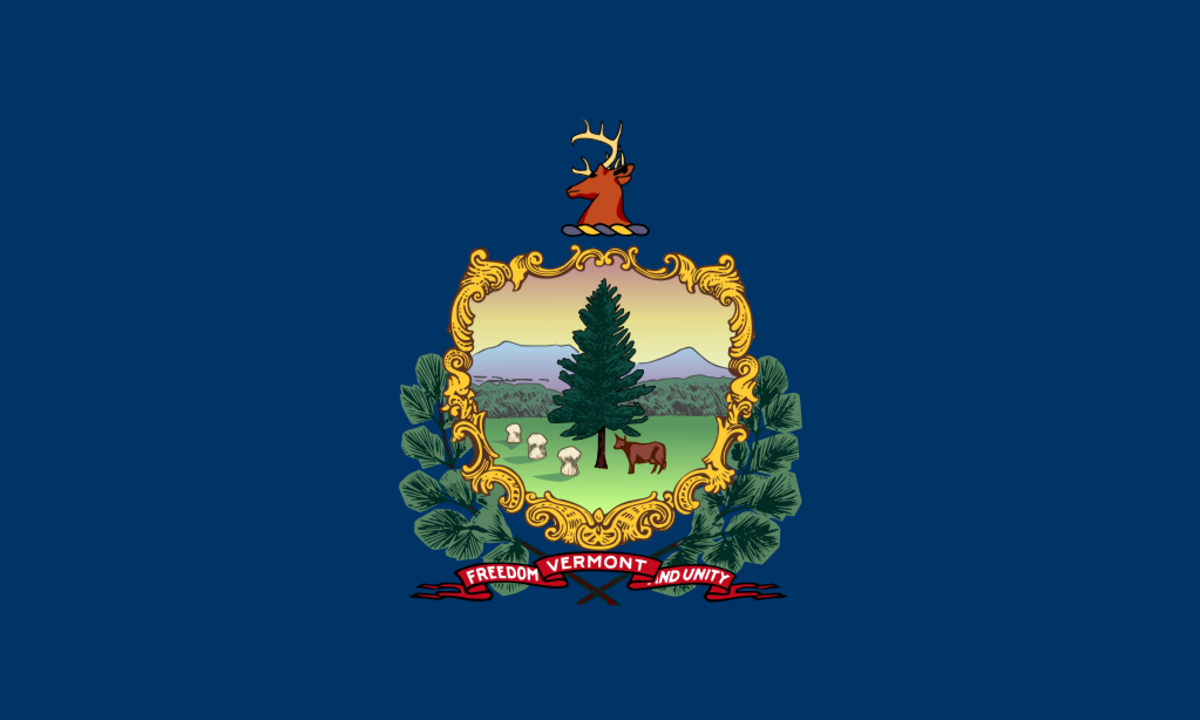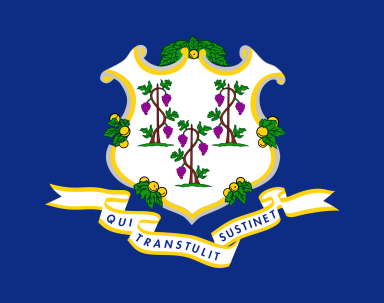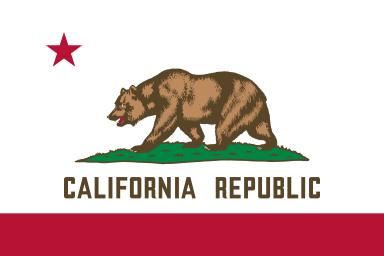Vermont is a great state for motorcycle enthusiasts, with its different routes, stunning scenery, and over 8,000 miles of dirt roads for adventurous riders, in spite of the short riding season. Its scenic byways can take travelers and locals through forests and farmlands and to historic and cultural towns. There are also waterfalls, valley views, and trailheads.
In 2021, the Vermont State Police recorded 16 motorcyclist deaths, a 10-year high. According to the FY2023 Highway Safety Plan, an average of 10.8 motorcycle fatalities were recorded in 2018-2022. With around 30,000 motorcycle registrations in the state, motorcyclists are among the most vulnerable road users, although they are a small portion of the 600,000 different vehicles registered.
Motorcyclists must be aware of the most dangerous roads in the state so they can be ready when traversing them. These paths include US Route 7, a two-lane undivided highway with intermittent heavy fog and slick conditions. Other dangerous roads include Vermont State Route 9, with its moose-related risk factors; US Route, with its poor road conditions and large potholes; and Vermont State Route 15, a rural road with limited access to emergency services and wildlife wandering on the highway.
Drive Well Vermont is a state initiative for motorcycle safety that urges all motorists to be aware of motorcycle riders and to always look twice before maneuvering. For motorcyclists, this initiative serves as a reminder to stay visible and to practice safe driving behaviors.
The laws and guidelines for motorcyclists listed below help riders ensure their safety and that of other road users across the Green Mountain State.
Vermont Motorcycle Driver’s License Requirements
Vermont requires a motorcycle endorsement for drivers to legally operate a motorcycle on its roads.
Firstly, an individual must obtain a motorcycle learner's permit. This permit is issued to licensed residents aged 16 and above, and those with a valid Junior Driver's License must have a parent or legal guardian sign their permit application. They must complete a four-hour Vermont Motorcycle Awareness Program training course or the Motorcycle Learner's Permit Exam. Those who fail the exam must wait at least one day to take it again.
Once the permit is issued, drivers must schedule a skills test appointment. The permit is valid only for 120 days and may be renewed twice. During this permit period, applicants must pass the skills test or the training course. If they fail, there is a 12-month waiting period before they can try to obtain another learner’s permit.
It is important to note that people who have a permit can only operate a motorcycle during the daytime, and they are not allowed to carry any passengers or ride out of state.
The motorcycle endorsement will be added to an individual’s driver’s license once they pass a 25-question, multiple-choice knowledge exam, as well as a skills exam.
Vermont Motorcycle Inspection and Registration Requirements
Annual inspections are required for motorcycles to be legally operated in Vermont. Newly registered motorcycles must undergo inspection within 15 days of registration.
To pass the inspection, the motorcycle must have functional horns, working hand and foot brakes, headlights, rearview mirrors, and a compliant exhaust system. Tires and fenders will also be checked, as well as the rear license plate bracket with a light over the plate. For motorcycles with attached sidecars, the vehicle must have a white or amber light mounted on the right side of the sidecar. All motorcycles that pass will be given a decal sticker that should be placed on the left side of the windscreen or a metal tag attached to the vehicle’s left side.
Motorcycles must also be registered and renewed to be operated on public roads and highways. The application for motorcycle registration requires the registration application, bill of sale, VIN verification form, and payment of fees. The plates and stickers will be sent to the owner through the mail, along with the registration card.
Vermont Motorcycle Helmet Law
Under Vermont law, all motorcycle riders and passengers are required to wear protective headgear or helmets equipped with reflectors.
The helmets must be approved by the DMV commissioner and must follow standards set by the Federal Motor Vehicle Safety Standards indicated in 49 C.F.R. § 571.218. The helmet must also be equipped with either a neck or chin strap. The DMV commissioner has the power to approve helmet types.
Some of the features required for helmets include riveted chin straps, an inner lining of one-inch-thick polystyrene foam, and no protrusions extending beyond the surface of the helmet. The manufacturer’s label is also required, which should state the manufacturer’s name, the helmet model and size, and the month and year of manufacturing.
Vermont Motorcycle Eye Protection Law
Operators of motorcycles that do not have windshields or screens are required to wear face or eye protection gear like eyeglasses, goggles, and face shields.
If the motorcycle is driven 30 minutes before sunrise or 30 minutes after sunset, the motorcyclist’s eye protection gear must have colorless lenses. This rule is implemented to allow the eyes to properly adjust to insufficient light and unfavorable atmospheric conditions. There is also a risk of not seeing people or vehicles on the highway with colorized lenses if they are 500 feet away.
Vermont Motorcycle Equipment Requirements
In addition to the gears mentioned above, Vermont motorcycles have equipment requirements to keep the vehicle in good shape when traveling.
All individuals operating and riding a motorcycle must use a permanent and regular seat, and motorcycles can only have a passenger if the vehicle is designed to carry two or more people. Additionally, passengers must be in a position that will not interfere with the operation or control of the motorcycle.
Footrests and handlebars are required for all motorcycles, with the handlebar having a limit of 15 inches in height above the operator’s seat.
Front lights are also required, which should be illuminated in such a way that objects on the ground at least 100 feet ahead are clearly visible. One lighted headlamp and at least one lighted tail or rear lamp are needed for motorcycles operating 30 minutes before sunrise or 30 minutes after sunset. Both lamps need to be approved by the DMV commissioner. Motorcycles with sidecars, on the other hand, are required to have a light on the right side of the sidecar.
Every motorcycle must have at least one working brake equipment that may be operated by hand or foot.
Vermont Motorcycle Noise Restrictions
Motorcycles in Vermont must operate at a noise level that is not more than 82 decibels on the A scale at 50 feet in a normal operating environment. Vehicles should be equipped with a functioning muffler system or any equipment that can reduce the machine’s operating noise.
To reinforce this rule, a proposal was filed to fine operators of vehicles with modified exhaust systems that produce more noise than the original mufflers. It suggests fines of up to $100 for a first offense and $350 for subsequent offenses.
Vermont Motorcycle Drunken Driving Law
Vermont motorcycle riders must not operate their vehicle if they are under the influence of alcohol or any substance that can hinder their ability to think and ride clearly.
The Drunken Driving Law states that it is illegal to ride a motorcycle with a blood alcohol concentration of 0.08 or more. This includes being under the influence of any other drug or a combination of alcohol and drugs.
Riders previously convicted of this violation should not be allowed to operate or be in physical control of any vehicle on the highway. They must not refuse a police officer’s request for an evidentiary test if there are reasonable grounds to believe they are violating the law again.
Additionally, those with subsequent violations who are found to have a BAC of 0.16 or more will be barred from operating a vehicle for three years.
Other consequences of violating the Drunken Driving Law include mandatory license suspension, fines, mandated alcohol and/or drug counseling, an insurance rate increase, and community service.
Vermont Motorcycle Laws on Driving on Roadways Laned for Traffic
Motorcycles in Vermont are entitled to the full use of a lane on roadways lined for traffic. Other motor vehicles must not deprive motorcycle riders of using the whole lane.
The law also states that lane splitting is illegal, which means motorcycles must not travel between lanes of traffic or between adjacent rows of vehicles. However, the law allows for the sharing of a single traffic lane by two motorbikes with a 10-foot distance requirement.
Additionally, motorcycles must not overtake or pass in the same lane occupied by the car being overtaken. When it is safe, motorcycles must change over to the adjacent left lane if they want to overtake.
Vermont Motorcycle Insurance Requirements
The minimum insurance required for Vermont motorcycles is compulsory liability insurance, which covers $25,000 for bodily injury to one person, $50,000 for two or more persons killed or injured in any one accident, and $10,000 for damages to property in any one accident. Drivers are required to have evidence of self-insurance amounting to $115,000 filed with the commissioner instead of liability insurance.
Additionally, drivers need to bring proof of insurance when operating a vehicle on the state’s highways. Any motor vehicle owner who violates this law will be required to pay a civil penalty of up to $500.
Underinsured and uninsured motorist coverage plans are also available to cover situations where an individual is involved in an accident and the at-fault driver does not have adequate insurance to pay for the damages.
These coverages are in place to protect not only the driver but also other road users in the event of an accident.
How Much Can One Sue for a Motorcycle Accident in Vermont?
Motorcycle accident victims in Vermont can pursue personal injury claims based on the injuries and damages they experienced due to the crash.
Damages can be economic or non-economic. Economic losses refer to actual monetary losses like medical costs, lost wages, hospital and rehabilitation bills, and property damage, while non-economic damages include mental distress and emotional anguish.
If another person is to blame for the losses, there are no limits on the state's ability to recover damages. However, those who want to claim damages against the state can only receive up to $500,000 per person and $2 million per accident.
Injured victims and their families can consult with an experienced personal injury lawyer to determine the appropriate strategy for their claims and receive guidance in seeking the maximum compensation possible. Attorneys can also help negotiate with insurance companies that try to limit payouts.
Vermont Statute of Limitations for Motorcycle Accidents
The statute of limitations for motorcycle accidents in Vermont is three years. Injured individuals, or their family members, have three years to file a lawsuit and seek compensation for the damages and injuries they have sustained in the accident. Damage to another person’s real property also has a three-year statute of limitations.
It should be noted that the statute of limitations may change for claims involving other instances. For example, claims against government entities must be made within four years, while claims involving wrongful death only have a two-year deadline for filing.
Vermont Is a Fault State for Insurance Claims
Vermont is a fault state for insurance claims involving motorcycle accidents. According to this rule, the person who caused the accident is liable for the losses incurred by the other party.
Injured victims have the right to seek compensation for their injuries and damages from the responsible parties.
Vermont Is a Modified Comparative Negligence State for Motorcycle Accident Lawsuits
Vermont is a modified comparative fault state with a 51% rule for motorcycle accident lawsuits. If the injured victims are found to be partially at fault for an accident, their damages will be reduced based on the degree of fault determined by the court.
For instance, if they are 25% at fault for an accident, if the original compensation award is $100,000, they will be entitled to only $75,000. However, any party found to have a degree of fault of 51% or above will not be able to recover any damages.
Since each case is unique, a personal injury attorney experienced in motorcycle accidents can provide better guidance in helping understand each case’s value.
Legal Resources for Vermont Motorcycle Accident Victims
Vermont Bar Association's Lawyer Referral Service
The Vermont Bar Association's Lawyer Referral Service provides an online directory for injured victims seeking legal assistance following a motorcycle accident. It helps people search for attorneys in Vermont who specialize in personal injury cases, including motorcycle accidents.
VTLawHelp Pro Bono Legal Service
VBA's Pro Bono Legal Service program provides free legal counsel to low-income individuals and families who are unable to afford an attorney. It connects eligible motorcycle accident victims with volunteer lawyers who offer representation and respond to legal questions.
Vermont Legal Aid
Vermont Legal Aid is a nonprofit organization that supports low-income individuals, including motorcycle accident victims, who cannot afford to hire an attorney. Its team of legal experts works on 11 essential projects in a wide variety of fields, from victims’ rights to disability law.
Vermont Crash Report Form
The Vermont Crash Report Form can be used by motorcycle accident victims and their families to report information about the crash. They should be able to indicate the details of the vehicles involved, including the model, type, make, and year. It is important to take note of the other driver’s name, address, and contact details since these pieces of information are also needed in the form.
Vermont Police Reports and Public Records Ordering
The Vermont Police Reports and Public Records Ordering web page is where those involved in motorcycle accidents can obtain their accident reports. People can request police reports, photo CDs, DUI incident videos, non-DUI incident videos, and audio recordings. It also has an FAQ page that includes common inquiries about accident records that can help motorcycle accident victims understand the procedures and requirements for obtaining documents and information related to their accidents.
Vermont Motorcycle Operator’s Manual
The Vermont Motorcycle Operator’s Manual covers traffic laws and regulations, gear and equipment requirements, and hand signals. It can be used by beginners and expert motorcycle riders to understand the laws or refresh their traffic knowledge. The manual also tackles learner’s permits and endorsements, with details on the Motorcycle Rider Training Program and the Motorcycle Awareness Classroom Training. Additionally, it educates drivers about motorcycle care and maintenance, annual inspections, and liability insurance.
Vermont Road Weather Information Stations
The Vermont Agency of Transportation's Road Weather Information System provides live weather and road condition updates that can be used by motorcycle riders, locals, and travelers alike when planning out their trips. It also offers access to the state’s road forecasts tailored to specific regions.
Step into the world of Expertise.com, your go-to hub for credible insights. We don't take accuracy lightly around here. Our squad of expert reviewers, each a maestro in their field, has given the green light to every single article you'll find. From rigorous fact-checking to meticulous evaluations of service providers, we've got it all covered. So feel free to dive in and explore. The information you'll uncover has been stamped with the seal of approval by our top-notch experts.





